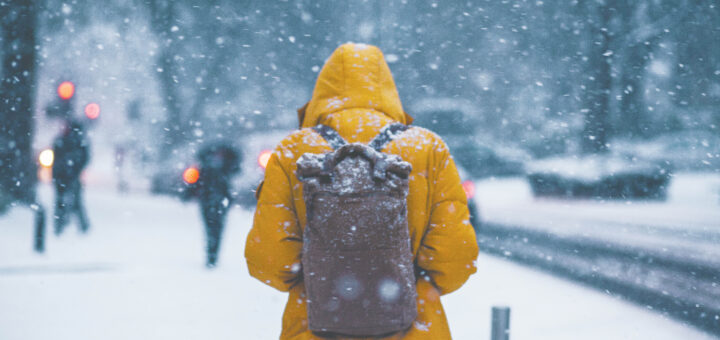Coping with the “winter blues” in Alberta

By Zach Poole, Contributor
Every year as the seasons change and the weather gets colder, it seems that our emotions change with them. Some of us get lazy and some get sad. But it is undeniable that this change is present. To many, it’s known as the “winter blues.”
Growing up across the country in Newfoundland, I never really experienced extreme weather fluctuations in the way I have since moving to Alberta. Thanks to the marine climate in Newfoundland, the winters never really dipped below -15C or so, and certainly the single day 30C weather fluctuations never happen, which are commonplace here in Calgary. These fluctuations seem to be primarily caused by the weather phenomenon known as “chinooks,” where dry, warm wind blows in off the Rocky Mountains and mixes with the frigid prairie winter.
Growing up on the east coast, the “winter blues” were undoubtedly present, albeit for different reasons. You would still see moods diminish as the days became shorter, but thanks to the less dramatic winters, 15 under was still temperate enough to allow people a chance to get outside when they needed it. However, the issue arises with the overcast, dreary days that are well known on the island. Yes, people can still get outside, but the overall lack of sunshine still takes a toll.
Here in Alberta, that isn’t the case. The days seem sunnier, but a nearly unbearable 35 below isn’t uncommon for days or even weeks at a time. This pushes people to stay inside at all costs and makes any time spent outdoors particularly unenjoyable, if not unsafe. From that description alone, it isn’t hard to see why the winter can get some people down in the dumps. Throw in a few days of chinook-fueled hope that the weather is turning around then straight back to a deep freeze and suddenly, the “winter blues” becomes more severe. It is interesting to see that the “winter blues” exists all across the country for a wide array of reasons.
As an Alberta transplant, I had to learn to cope with these drawbacks. Typically during these nasty cold snaps, I try to stay inside as much as I am able to and bury myself in a new book, video game, or TV series while I wait out the weather.
Another method I’ve learned is to set plans for something to look forward to when it’s warmer. I find that if I can count down the days to something fun, it becomes a little more bearable to be stuck indoors.
Other people seek out different solutions to boost their moods and battle the blues, such as supplements, increased workout routines and specially designed lamps that mimic sunlight. Naturally, these aren’t catch-all solutions, and they certainly won’t work for everyone, but they do seem to make the cold snaps a little more manageable.
The proper terminology behind the “winter blues” is Seasonal Affective Disorder (SAD), more commonly known simply as seasonal depression. SAD is a condition that typically causes people to feel down as the weather grows colder and the days shorter. SAD can be brought on by lower serotonin and melatonin levels in the body, often caused by the changing weather and less sunlight, something heightened greatly by being stuck indoors. Interestingly in some cases, SAD can be instead brought on by weather changing in the opposite direction where the warmer weather creates issues. Certainly, being stuck inside for long periods of time and having gatherings cancelled due to the COVID-19 pandemic can also heighten the impacts of this disorder.
Regardless of what sparks a bout of the “winter blues”, it is crucial to remember the importance of sunlight and vitamin D during these winter months; it is called the “sunshine vitamin” for an excellent reason.
It is also essential to recognize that in some cases, simply getting outside may not be enough. In those situations, it is a good idea to seek out help and guidance from friends, family and professionals.




